Support systems II- Trees LECTURE 4
1/28
There's no tags or description
Looks like no tags are added yet.
Name | Mastery | Learn | Test | Matching | Spaced |
|---|
No study sessions yet.
29 Terms
How do plant cells cupport themselves (unlike animal cells?)
internal hydrostatic pressure
acting against the cell wall
How?
impressive hydrostatic pressures of more than 10 atmospheres
→ without bursting
→ consequence of Laplace’s law
Why no locomotion?
inflexible walls
cells of plants and fungi are not suitable for forming muscles
require large and rapid cell deformations
Two main reasons for tree stability problem
own weight (gravity forces)
wind (drag forces)
Which is most important problem?
Gravity forces?
long thin columns can buckle and collapse but never really happens
trees are much thicker
In side branches?→ no→ CSA is still circular
Wind forces→ more important
can also uproot or break trees!
Bending moment on tree
M= Fwind x h
Resulting stress on outside of trunk
stress= 4M/(r³pi)
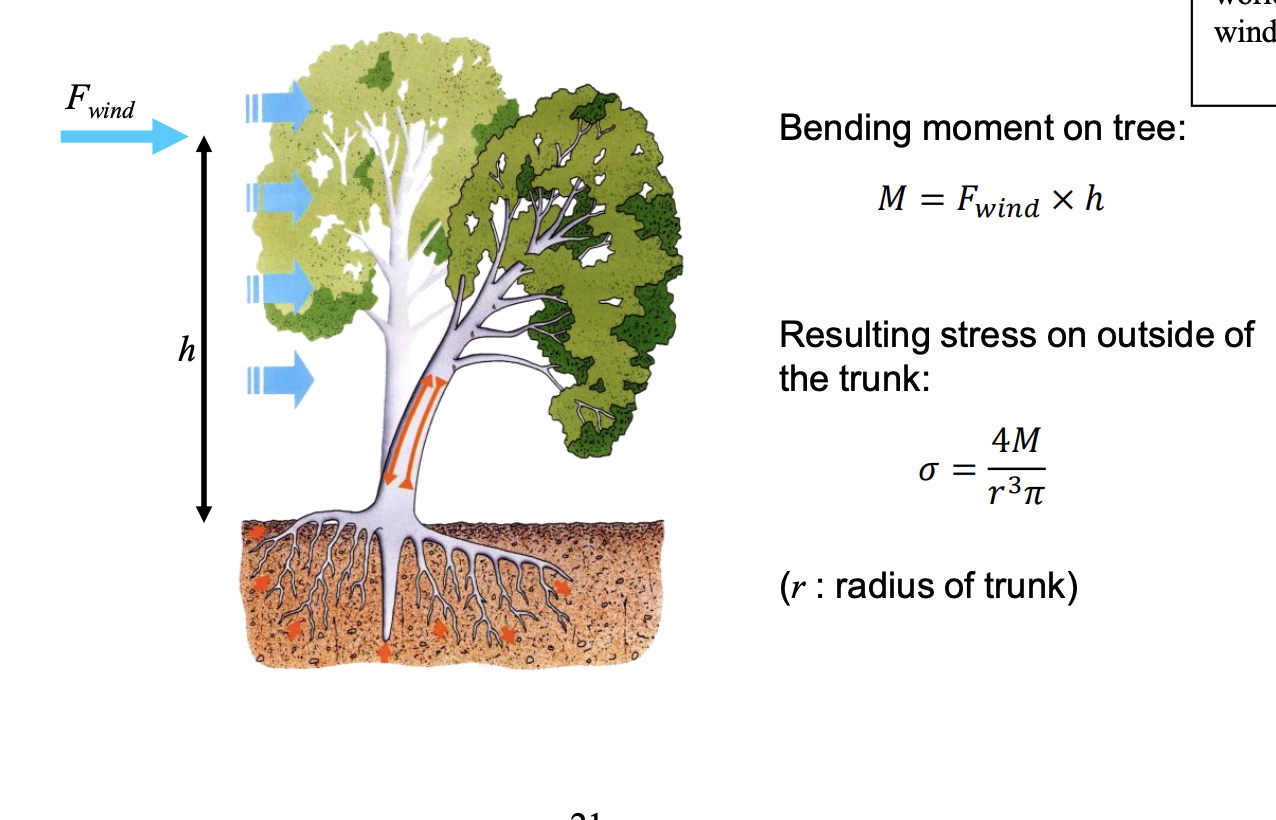
The bending moment sets up stresses in the tree trunk
highest on the outside
When do stresses increases/decrease
stress increases linearly with tree heigh and leaf sail area
decreaess with the cube of the stem’s radius
To reduce excessive stressess the tree could
grow less tall
grow thicker trunks
reduce the leaf area
Instead of removing photosynthetically active leaves, many trees…
have leaves or entire stems that can strongly deform (reconfigure)
in the wind
giving them a streamlined shape that reduces drag
Structure of wood
lightweight cellular structure
mainly xylem conduits
only cells at exterior part of the stem are alive
Material properties are direction-dependent
→ wood is anisotropic
90-95% of all the cells are aligned parallel to stem
remainder are storage cells that are arranged in the radial direction
no cells are aligned tangientially
Conifer vs Angiosperm wood
Conifer wood (softwood)
1-10mm long and thin ttracheids
10-80microm diameter
Angiosperm wood (hardwood)
thin fibres and very long 10cm-10m
wide vessels (diamter 30-300 microm)
several joined cells
What are wood cell walls made of?
microfibrils of cellulose
embedded in matrix of hemicelluloses
lignin
→ several layers
The several layers of wood
middle layer→ thickest
orientation of cellolose microfibrils in this layer→ important for te wood’s mechanical properties
Strucuture of the fibrils
oblique
wound helically
at an angle of ca 5 - 50 degrees to the tree trunk axis
→ The larger the angle, the softer and the more extensible is the wood
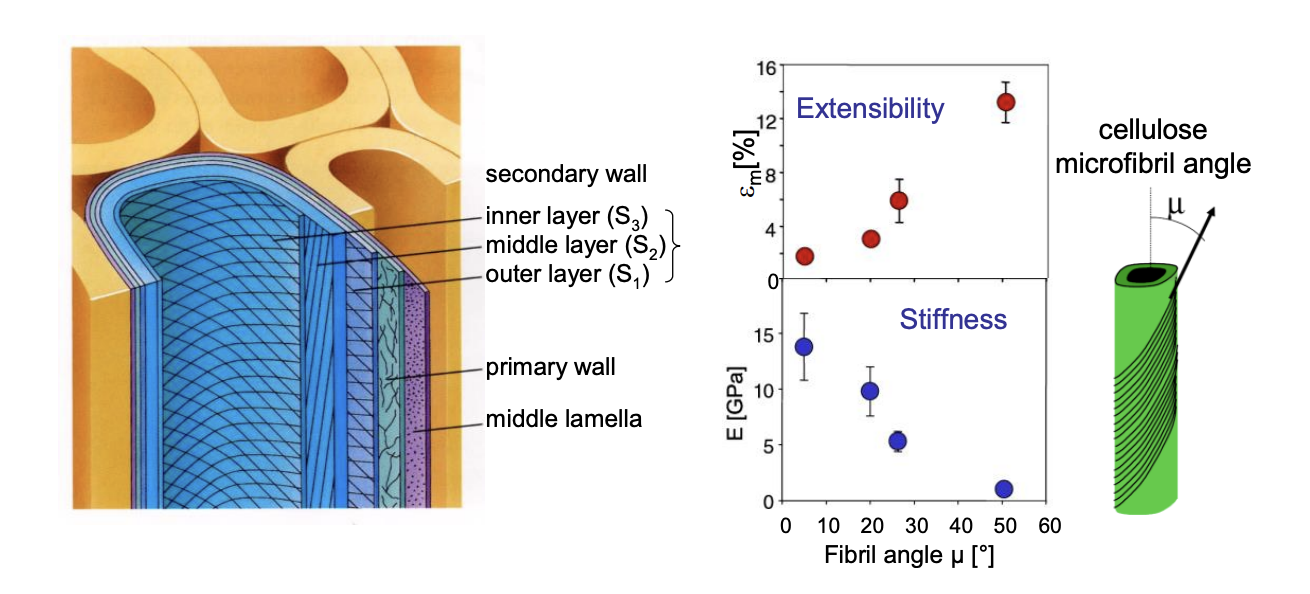
Fibril angle in pine trees
decreases from the pith to the bark
reflecting differences between young and old trees
Why have this?
reflect a change in strategy from young to old trees
younger trees are relatively more exposed to the wind due to their larger surface area
→ escape the wind forces by aligning with them
HOW?
they are more flexible
Older trees
heavier and cannot afford bending over too much
→ designed to be stiffer and to resist the bending
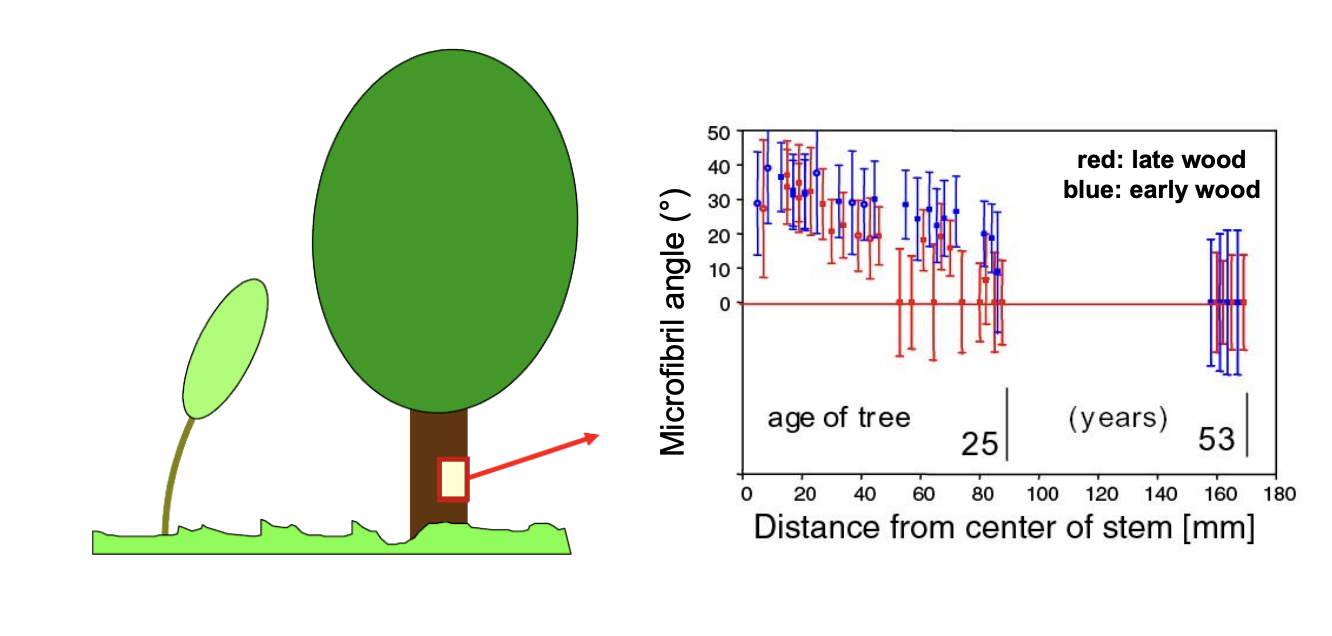
Compression vs tension in wood
wood cells are thin-walled tubes
→ prone to buckling
THERFORE: only about half as strong in compression as in tension
How do trees reduce compressive stresses
Pre-stressed
fully hydrated wood cells are laid down by cambium on outside of the stem
dry out and shorten as they mature
as they are attached to wood inside, this sets up ‘pre-tension’ in the outer part of the stem and ‘precompression’ in the middle
This prestress has the advantage that the max compressive stresses are reduced when the stem is bent over by the wind
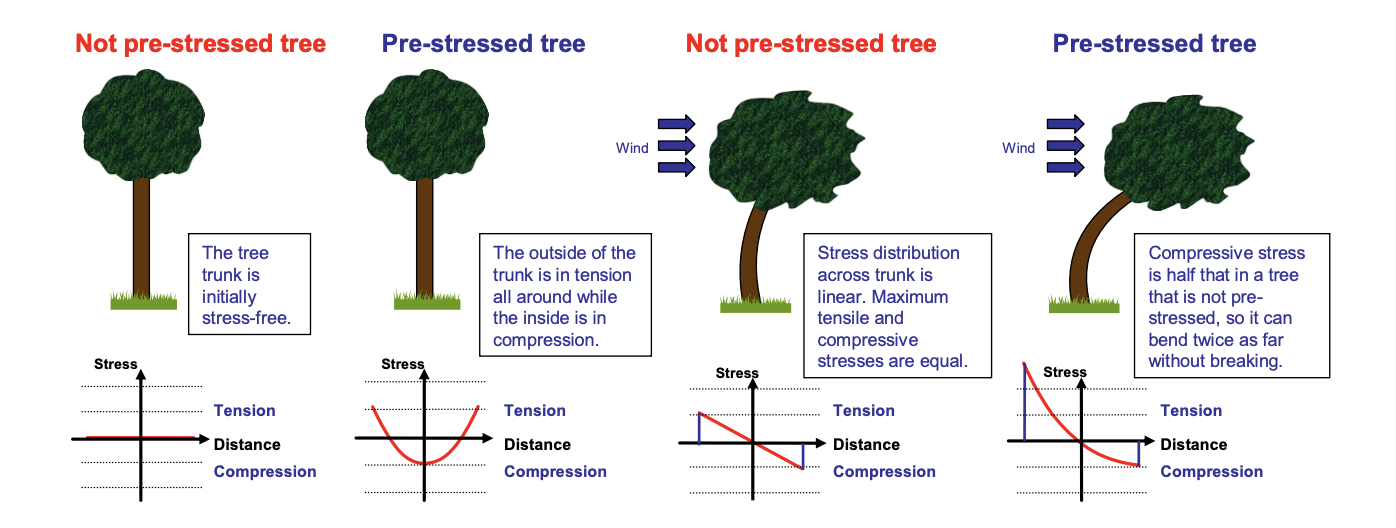
How do conifers respond to load on branches?
adding compression wood
on the underside with large microfibril angles
How do angiosperms respond?
adding tensile wood
with small fibril angles
on the upper side which tends to shorten
Thigmomorphogenesis
trees control mechanical design
etecting mechanical stresses and responding to it with a range of growth responses→ thigmomorphogenesis
In plants prevented from bending (staked trees)
stems and roots grow insufficiently
so that the stem is unstable when the stake is removed
Where do trees lay down wood?
where mechnical stresses are highest
indicating growth responses of the wood are controlled locally
deposition of new wood by secondary growth in cambrium reduces the mechnical stress
provides a feedback system that keeps stresses low
Experiements have shown (what is needed to stimulate growth responses?
only a small number of short pertubations (stresses)
How are mechanical stresses detected in plants?
via opening of stretch-sensitive ion channels
trigger further intracellular reactions
effects of mechanical pertubations are axuin-stimulated growth and callus deposition
How do trees ensure they are anchored in the soil?
Lateral roots
withstand torque of the wind
wider base shifts, the centre of rotation sideways
giving the soil weight more impact because of the larger lever arm
→ often laterally flattened and thus well-adapted for vertical forces
Compressive buttresses
have lateral roots but also grow a massive base→ helps them to resist compressive loads
Tensile buttresses
some trees grow long and thin buttresses→ too weak to resist compression
but can develop tension when the roots are well anchored
Tap roots
long vertical taproots that reist wind forces by puhsing soil sideways
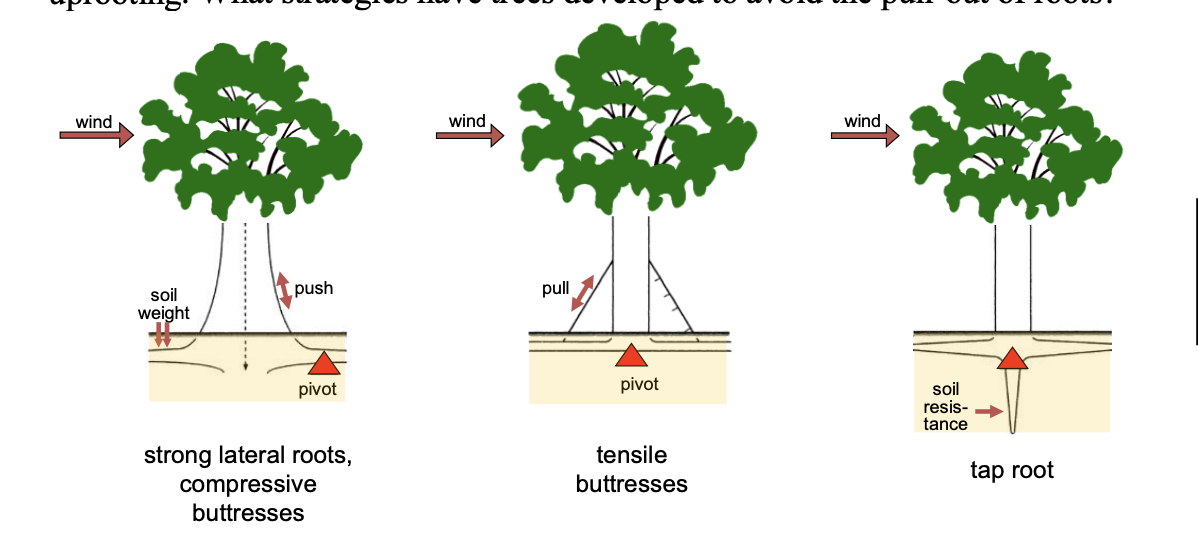
Another strategy to help reach large heights?
climb
→ climbers attach themselves to rocks or other plants using
twining stems, hooks, clinging roots or tendrils→ adhesive pads
Attachments are purely tensile→ stable with much less material